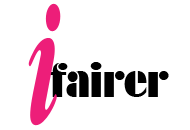1 of 1 parts
Vinyl-to-Spotify The-Transformation

The journey of music consumption from vinyl records to digital streaming services like Spotify is a fascinating tale of technological innovation and cultural shifts. This evolution has transformed not just how we listen to music, but also how music is created, distributed, and enjoyed.
The Vinyl Era
Vinyl records emerged in the mid-20th century and quickly became the dominant format for music consumption. Their rich sound quality and the tactile experience they provided made them a beloved medium. The large album covers also allowed for significant artistic expression, turning album art into a celebrated aspect of music culture. Vinyl records encouraged a more intentional listening experience, where listeners would engage deeply with an entire album rather than individual songs.
The Transition to Digital
The introduction of compact discs (CDs) in the 1980s marked the beginning of a major shift. CDs offered superior sound clarity, portability, and durability compared to vinyl and cassettes. By the 1990s, CDs had become the primary format for music consumption
The digital revolution truly took off with the advent of MP3s and the internet in the late 1990s and early 2000s. Platforms like Napster popularized digital downloads, allowing people to share and download music files easily. This era brought about significant changes, including the challenge of piracy and the decline of physical album sales.
The Streaming Revolution
The latest transformation in music consumption has been driven by streaming services. Spotify, launched in 2008, pioneered a model where users could access millions of songs for a monthly fee or through ad-supported free tiers. This model shifted the focus from owning music to accessing it on-demand. The convenience of streaming, combined with personalized playlists and recommendations, has made it the preferred method for many listeners today.
Streaming services have democratized music distribution, allowing independent artists to reach global audiences without traditional record labels. However, this shift has also brought challenges, including debates over fair compensation for artists and the impact of playlist culture on the traditional album format.
The Resurgence of Vinyl
Interestingly, despite the dominance of digital music, vinyl records have seen a resurgence in popularity. Many music enthusiasts appreciate the warm sound quality and the tangible experience vinyl offers. Collecting vinyl has become a niche but growing hobby, with record stores and new vinyl releases continuing to thrive.
The evolution of music consumption from vinyl to Spotify reflects broader trends in technology and culture. Each format shift—from live performances to vinyl records, CDs, digital downloads, and streaming services—has brought its own unique benefits and challenges. As we look to the future, it seems likely that there will continue to be a place for both digital and physical music formats, each serving different needs and preferences of listeners around the world.
Latest Gossips
Mixed Bag
 From Lehenga to Loungewear: The Versatility of Indian Textiles in Everyday Fashion
From Lehenga to Loungewear: The Versatility of Indian Textiles in Everyday Fashion
Indian textiles are celebrated worldwide for their intricate craftsmanship, rich history, and adaptability...... Shampoo vs. Conditioner: Are You Using Them Correctly!
Shampoo vs. Conditioner: Are You Using Them Correctly!
Shampoo and conditioner are essential hair care products, but many people use them incorrectly or ...... Summer Saree Trends: Choosing the Right Fabric and Colors
Summer Saree Trends: Choosing the Right Fabric and Colors
Sarees are an evergreen choice in Indian fashion, but wearing them in summer requires careful selection...... Baingan Bharta: Smoked Eggplant Delight
Baingan Bharta: Smoked Eggplant Delight
Baingan Bharta is a beloved North Indian dish that celebrates the rich, smoky flavors of roasted eggplant......
Most Popular
Dare To Share
 Bully Is Back
Bully Is Back
The boy who sexually harassed me..
Read More... Man hitting
Man hitting
I am a house girl in one of the posh estates in Mombasa. I know......
Read More... Past Relation
Past Relation
I have a son and my fiance has no clue. What do i do? I am 31 and....
Read More...
check outclick money scam review. Recently, new review of click money is posted on clickmoneyscam.com

